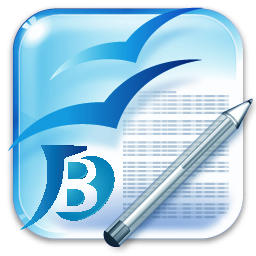Kontribusi asesmen formatif dalam tahapan understanding by design terhadap pemahaman mahasiswa calon guru biologi
DOI:
https://doi.org/10.26555/bioedukatika.v6i2.9507Keywords:
Asesmen formatif, Understanding by design, PemahamanAbstract
Paradigma pembelajaran saat ini telah berubah dari berpusat pada guru menjadi berpusat pada siswa. Hal ini sejalan dengan tuntutan keterampilan abad-21, oleh karena itu diperlukan pembelajaran yang melatih keterampilan berpikir tingkat tinggi seperti pemahaman. Saat ini masih terdapat pembelajaran yang tidak mendorong kearah terbentuknya pemahaman mahasiswa, selain itu proses penilaian yang dilakukan masih berorientasi pada nilai akhir yang tidak autentik. Oleh karena itu dibutuhkan asesmen formatif, yaitu penilaian yang memiliki tiga komponen yang diperlukan yaitu umpan balik (feedback), penilaian sejawat (peer-assessment), dan penilaian diri sendiri (self-assessment) yang bertujuan membentuk pemahaman. Penelitian ini bertujuan untuk mengetahui korelasi dan kontribusi asesmen formatif melalui UbD (Understanding by Design) dengan pemahaman mahasiswa. Partisipan dalam penelitian ini adalah mahasiswa calon guru Biologi. Penelitian menggunakan rancangan korelasi kuantitatif, untuk mendeskripsikan dan mengukur serta mengetahui derajat keterkaitan antara dua variabel. Uji statistik yang dilakukan adalah uji korelasi dan regresi. Penelitian menghasilkan kesimpulan bahwa terdapat korelasi antara semua komponen asesmen formatif melalui UbD dengan pemahaman mahasiswa. Hasil uji regresi dihasilkan R2 = 0,547. menunjukkan bahwa tingkat pengaruh komponen asesmen formatif yaitu feedback, peer-assessment, dan self-assessment terhadap pemahaman UbD mahasiswa sebesar 54,7%.
The contribution of formative assessment with the stages of understanding by design (UbD) to the understanding of prospective biology teachers. Todays learning process puts the students as the subject, or in other words, it is student centered in which teachers are only as facilitators. This is in line with the demanded skills of the 21st-century, in which learning is required to train students to have high-level thinking skills such as understanding. However there are still many learning activities that do not lead to the formation of students understanding. Besides that the assessment process is still oriented at the final score/grade that is not authentic. A formative assessment, an assessment that has three required components: feedback, peer assessment, and self assessment, is therefore required. This assessment is expected to form an understanding. This study aims to determine the correlation and contribution of formative assessment through UbD to the understanding of the students. Participants in this study were students of prospective Biology teachers. The study used quantitative correlation design to describe and measure, and know the degree of linkage between the two variables. The statistical test performed was correlation and regression test. The study concludes that there is a correlation between all components of the formative assessment through UbD with students understanding. Regression test result yielded R2 = 0.547 which means that the level of influence of the components of the formative assessment i.e. feedback, peer assessment, and self assessment on the students' understanding is 54.7%.
References
Admiraal, W., Huisman, B., & Van de Ven, M. (2014). Self- and Peer Assessment in Massive Open Online Courses. International Journal of Higher Education, 3(3), 119-128. https://doi.org/10.5430/ijhe.v3n3p119
Anderson, L. W., & Krathwohl, D. R. (2001). A taxonomy for learning, teaching, and assessing : a revision of Bloom’s taxonomy of educational objectives. Longman.
Crane, L., & Winterbottom, M. (2008). Plants and photosynthesis: peer assessment to help students learn. Journal of Biological Education, 42(4), 150-156. https://doi.org/10.1080/00219266.2008.9656133
Creswell, J. W. (2010). Research design pendekatan kualitatif, kuantitatif, dan mixed. Yogyakarta: Pustaka Pelajar.
Egelandsdal, K., & Krumsvik, R. J. (2017). Clickers and formative feedback at university lectures. Education and Information Technologies, 22(1), 55-74. https://doi.org/10.1007/s10639-015-9437-x
Fry, H., Ketteridge, S., & Marshall, S. (2009). Understanding student learning. In H. Fry, S. Ketteridge, & S. Marshall (Ed.), A handbook for teaching and learning in higher education (third). New York: Routledge.
Gloria, R. Y., Sudarmin, Wiyanto, & Indriyanti, D. R. (2017). Pemahaman mahasiswa calon guru biologi dengan indikator understanding by design (UbD) pada topik fisiologi tumbuhan. In The 5th URECOL PROCEEDING (hal. 1248-1253). Yogyakarta: Universitas Ahmad Dahlan. Diambil dari https://anzdoc.com/pemahaman-mahasiswa-calon-guru-biologi-dengan-indikator-unde.html
Heritage, M. (2010). Formative assessment and next-generation assessment systems: Are we losing an opportunity? New York. Diambil dari https://files.eric.ed.gov/fulltext/ED543063.pdf
Karsidi, ES, S. M., & Indriyanti, D. R. (2013). Penerapan perangkat pembelajaran sistem regulasi model kooperatif tipe jigsaw berbasis peer assessment. Journal of Innovative Science Education, 2(1), 21-26. Diambil dari https://journal.unnes.ac.id/sju/index.php/jise/article/view/1288
Lee Hang, D. M., & Bell, B. (2015). Written formative assessment and silence in the classroom. Cultural Studies of Science Education, 10(3), 763-775. https://doi.org/10.1007/s11422-014-9600-5
Lynd-Balta, E. (2006). Using literature and innovative assessments to ignite interest and cultivate critical thinking skills in an undergraduate neuroscience course. CBE Life Sciences Education, 5(2), 167–174. https://doi.org/10.1187/cbe.05-08-0108
Mitasari, Z., & Prasetiyo, N. A. (2016). Penerapan model diskusi-presentasi dipadu analisis kritis artikel melalui lesson study untuk meningkatkan pemahaman konsep, kemampuan berpikir kritis, dan komunikasi. JURNAL BIOEDUKATIKA, 4(1), 11-14. https://doi.org/10.26555/bioedukatika.v4i1.4736
Mulliner, E., & Tucker, M. (2017). Feedback on feedback practice: Perceptions of students and academics. Assessment & Evaluation in Higher Education, 42(2), 266-288. https://doi.org/10.1080/02602938.2015.1103365
Noblitt, L., Vance, D. E., & Smith, M. L. D. (2010). A comparison of case study and traditional teaching methods for improvement of oral communication and critical-thinking skills. Journal of College Science Teaching, 39(5), 26-32. Diambil dari http://web.b.ebscohost.com/ehost/pdfviewer/pdfviewer
Noviyanti, L., Indriyanti, D. R., & Ngabekti, S. (2014). Pengembangan instrumen self dan peer assessment berbasis literasi sains di tingkat SMA. Lembaran Ilmu Kependidikan, 43(1), 32-39. Diambil dari https://journal.unnes.ac.id/nju/index.php/LIK/article/view/3165
Popham, W. J. (2016). Classroom assessment: What teachers need to know. Boston: Pearson Education.
Quitadamo, I. J., & Kurtz, M. J. (2007). Learning to improve: Using writing to increase critical thinking performance in general education biology. CBE Life Sciences Education, 6(2), 140-154. https://doi.org/10.1187/cbe.06-11-0203
Rahmatan, H., & Liliasari. (2012). Pengetahuan awal calon guru biologi tentang konsep katabolisme karbohidrat. Jurnal Pendidikan IPA Indonesia, 1(1), 91-97. https://doi.org/10.15294/jpii.v1i1.2019
Reynolds, J., & Moskovitz, C. (2008). Calibrated peer review assignments in science courses: Are they designed to promote critical thinking and writing skills? Journal of College Science Teaching, 38(2), 60-66. Diambil dari http://66.208.62.164/@api/deki/files/810/=Reynolds_and_Moskovitz_2008.pdf
Ronis, D. (2011). Asesmen sesuai cara kerja otak. Jakarta: Indeks.
Rusman. (2014). Model-model pembelajaran. Jakarta: PT Raja Grafindo Persada.
Saptono, S., Rustaman, N. Y., Saefudin, S., & Widodo, A. (2013). Model integrasi atribut asesmen formatif (IAAF) dalam pembelajaran biologi sel untuk mengembangkan kemampuan penalaran dan berpikir analitik mahasiswa calon guru. Jurnal Pendidikan IPA Indonesia, 2(1), 31–40. https://doi.org/10.15294/jpii.v2i1.2507
Smith, M. K., Wood, W. B., & Knight, J. K. (2008). The genetics concept assessment: A new concept inventory for gauging student understanding of genetics. CBE Life Sciences Education, 7(4), 422-430. https://doi.org/10.1187/cbe.08-08-0045
Sriyati, S., Rustaman, N. Y., & Zainul, A. (2010). Kontribusi asesmen formatif terhadap habits of mind mahasiswa biologi. Jurnal Pengajaran Matematika dan Ilmu Pengetahuan Alam, 15(2), 77-86. https://doi.org/10.18269/jpmipa.v15i2.283
Widiaswati, D., Nurhayati, S., & Sudarmin. (2014). Pengembangan instrumen self-assessment pada pembelajaran IPA terpadu di SMP tema energi dalam sistem kehidupan. Unnes Science Education Journal, 3(3), 623-630. https://doi.org/10.15294/usej.v3i2.3349
Wiggins, G., & McTighe, J. (2011). The understanding by design guide to creating high-quality units. Alexandria: ASCD.
Wingate, U. (2010). The impact of formative feedback on the development of academic writing. Assessment & Evaluation in Higher Education, 35(5), 519-533. https://doi.org/10.1080/02602930903512909
Ziman, M., Meyer, J., Plastow, K., Fyfe, G., Fyfe, S., Sanders,., Brightwell, R. (2007). Student optimism and appreciation of feedback. In Proceedings of the 16th Annual Teaching Learning Forum. Perth: The University or Western Australia. Diambil dari http://lsn.curtin.edu.au/tlf/tlf2007/refereed/ziman.html
Downloads
Published
Issue
Section
License
Authors who publish with Jurnal Bioedukatika agree to the following terms:
- Authors retain copyright and grant the journal right of first publication with the work simultaneously licensed under a Creative Commons Attribution License (CC BY-SA 4.0) that allows others to share the work with an acknowledgment of the work's authorship and initial publication in this journal.
- Authors are able to enter into separate, additional contractual arrangements for the non-exclusive distribution of the journal's published version of the work (e.g., post it to an institutional repository or publish it in a book), with an acknowledgment of its initial publication in this journal.
- Authors are permitted and encouraged to post their work online (e.g., in institutional repositories or on their website) prior to and during the submission process, as it can lead to productive exchanges, as well as earlier and greater citation of published work.









